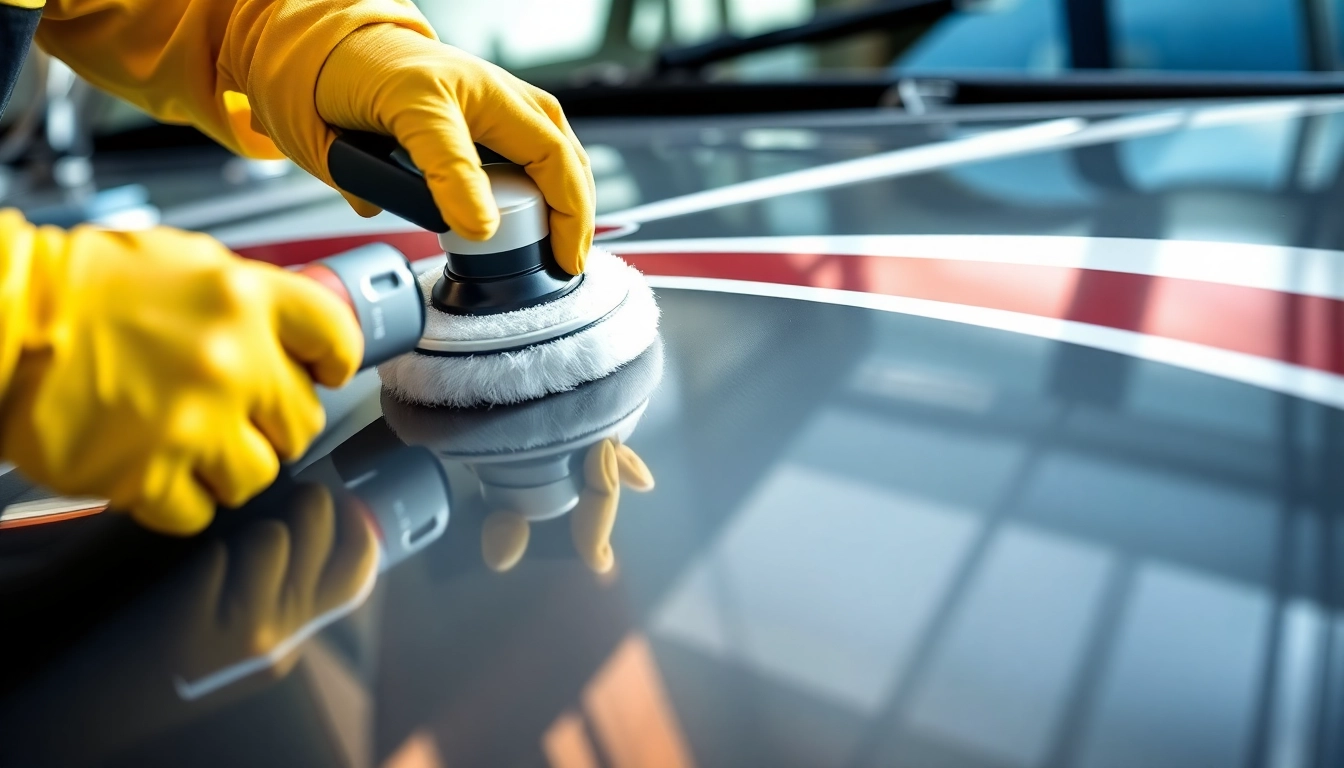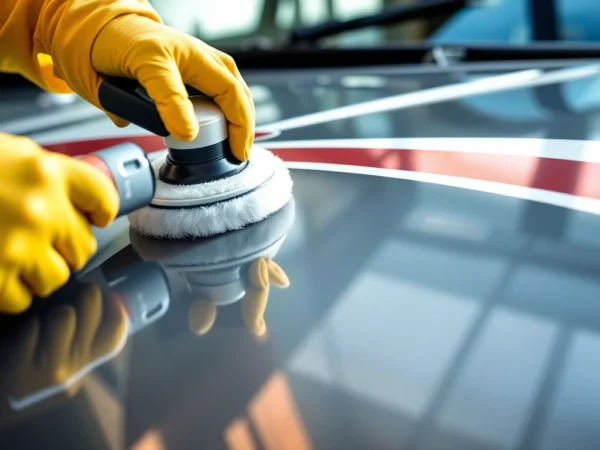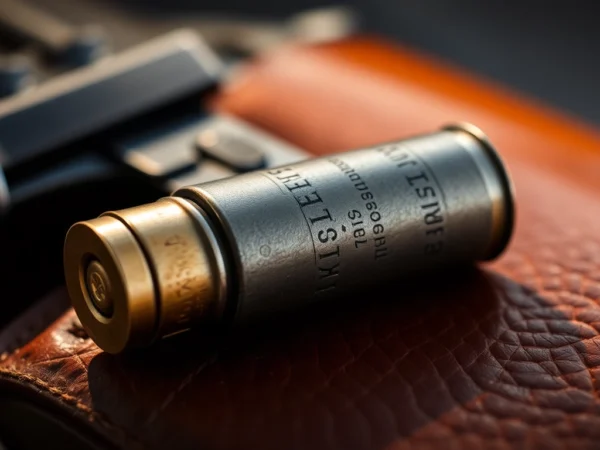Mastering Wohnmobil Politursiegelung: Expert Tips for a Durable and Glossy Finish
Understanding Wohnmobil Politursiegelung: Essentials and Advantages
When it comes to maintaining and enhancing the appearance and longevity of your Wohnmobil, investing in a high-quality politursiegelung (polish sealant) is paramount. The process not only restores the vehicle’s glossy finish but also provides a durable protective barrier against environmental elements such as UV rays, water, dirt, and pollutants. For enthusiasts seeking professional-grade results, Wohnmobil Politursiegelung offers an effective solution to keep your vehicle in pristine condition. Whether you’re aiming for a showroom shine or long-term protection, understanding the fundamentals of Wohnmobil politursiegelung helps in making informed decisions suited to your specific needs.
What is Wohnmobil Politursiegelung and Why is it Essential?
Wohnmobil Politursiegelung is a specialized process where a high-quality polish, combined with a sealant or protective coating, is applied to the surface of your camper or motorhome. This treatment aims to revive the vehicle’s paintwork, eliminate minor scratches, and create a hydrophobic, glossy finish that repels water and other contaminants. The significance of this process lies in its ability to extend the lifespan of the vehicle’s exterior, maintain a high resale value, and reduce maintenance efforts over time.
Given the exposure to diverse weather patterns, road debris, and UV radiation, a well-applied politursiegelung acts as a shield, preventing premature aging and damage of the vehicle’s surface. Importantly, applications range from detailed restoration to routine protection, making it a vital component of comprehensive Wohnmobil care. The key to maximum effectiveness is choosing the right products and applying them with precision.
Advantages of Professional vs. DIY Application
Professional Application
Opting for professional Wohnmobil politursiegelung ensures expert handling, optimal technique, and access to advanced products. Professionals often possess specialized equipment like high-speed polishers and trained technicians who can meticulously prepare the surface, apply the sealant evenly, and achieve an unrivaled high-gloss finish. This method guarantees longevity, with expert inspection minimizing risks of streaks, uneven spots, or overlooked flaws.
DIY Application
While DIY options like spray-on ceramic coatings or liquid sealants are accessible and cost-effective, they demand a high level of skill and careful surface preparation. For enthusiasts with experience and patience, applying DIY products can provide satisfactory results and a significant protective layer. However, improper application can lead to uneven coatings, increased susceptibility to scratches, or reduced durability. Using quality tools, such as microfiber applicators and polishing pads, is critical for achieving professional-style finishes.
Ultimately, choosing between professional and do-it-yourself applications depends on the vehicle’s condition, user skill, and desired longevity of the sealant.
Key Features of a High-Quality Wohnmobil Politursiegelung
High-caliber politursiegelung products are characterized by several core features that influence performance:
- Hydrophobic Properties: Repels water effectively, preventing water spots and reducing dirt adhesion.
- Long-lasting Durability: Offers extended protection—often several years—against UV fade, contaminants, and minor scratches.
- Ease of Application: Applies smoothly and evenly; self-leveling formulations reduce streaking.
- Compatibility: Suitable for various surfaces such as Gelcoat, painted surfaces, and plastics commonly used on Wohnmobiles.
- Environmental Resistance: Performs well under extreme weather conditions, including salty air, rain, and intense sunlight.
Professional-grade products like those referenced in industry reviews often feature ceramic or nano-ceramic technology, maximizing protection and gloss restoration. When selecting a product, prioritize those with proven performance metrics and positive user reviews.
Preparation Steps for Effective Wohnmobil Politursiegelung
Thorough Cleaning and Surface Assessment
The foundation of a successful politursiegelung is meticulous cleaning. Use dedicated Wohnmobil cleaning products, such as the Power Cleaner 1L, to remove dirt, grime, and organic residues. A clean surface ensures better adhesion and uniform application. Once cleaned, inspect the surface for paint defects, scratches, or oxidation. Surface assessment helps in identifying minor damages that might require prior correction.
Removing Existing Contaminants and Minor Damages
Removing embedded contaminants like tree sap, bird droppings, or water spots is crucial. Clay bar treatments or specific decontamination shampoos can assist in this process. Address superficial scratches or swirl marks with polishing compounds to create a uniform surface. This step ensures the subsequent sealant bonds securely and achieves maximum gloss.
Choosing the Right Polishing Tools and Products
Select tools such as foam pads, soft polishing pucks, and microfiber applicators aligned with the surface’s needs. For instance, softer, fine-polishing pads are suitable for final gloss enhancement, while medium pads handle initial defect removal. Pair these with high-quality polishing compounds like the BCC Power Polish for effective results.
Application Techniques for Wohnmobil Politursiegelung
Step-by-step Process
- Ensure the surface is completely dry and free of loose debris.
- Apply a small amount of polishing compound or sealant onto a clean, soft foam pad or microfiber applicator.
- Work in manageable sections, applying even pressure and overlapping strokes.
- Use a dual-action polisher for large surfaces to distribute the product uniformly and reduce user fatigue.
- Allow the product to hazen or cure as specified, then buff with a clean, soft microfiber towel to restore gloss.
Tips for Achieving Even, Streak-Free Coating
Maintain consistent movement, avoid applying excessive product, and work in optimal lighting. Using an application clay or polishing pad with a gentle, even motion minimizes streaks and ensures a high-gloss finish.
Ensuring Proper Curing and Polishing
Follow product-specific curing times—often 15–30 minutes—and buff thoroughly. Avoid washing or exposing the surface to water during the curing window to maximize protection.
Factors Impacting Durability and Performance
Environmental Conditions and Their Effects
Environmental exposure significantly influences the lifespan of Politursiegelung. UV sunlight accelerates degradation, especially if the coating isn’t UV-resistant. Harsh weather, such as snow, rain, or salt, can erode protective layers, decreasing effectiveness over time.
Maintenance Routines to Extend Protection
Regular washing with pH-neutral shampoos like the Microfaser Towels and gentle cleaning techniques preserve the integrity of the sealant. Occasional reapplication or top-up coatings using spray sealants or quick detailers reinforce protection.
Signs Indicating Reapplication or Touch-Ups
Loss of gloss, water no longer beads, or increased dirt retention indicate diminished protection. Minor scratches or swirl marks may also suggest the need for a polishing session before re-sealing.
Optimizing Results: Aftercare and Final Inspection
Cleaning Techniques Post-Siegelung
Use soft microfiber towels and pH-neutral washes to clean the surface without stripping protective layers. Avoid abrasive brushes or harsh chemicals that can damage the finish.
Common Pitfalls and How to Avoid Them
Common issues include applying products in direct sunlight, working on dirty surfaces, or rushing the curing process. Ensuring proper surface prep, working under shaded conditions, and following manufacturer instructions mitigate these risks.
Additional Protective Measures for Extreme Weather
For vehicles frequently exposed to extreme conditions, consider installing secondary protective coatings like ceramic layers (e.g., the Tailor-made Marine Sealant MS-3000/60 V2) for enhanced durability.



